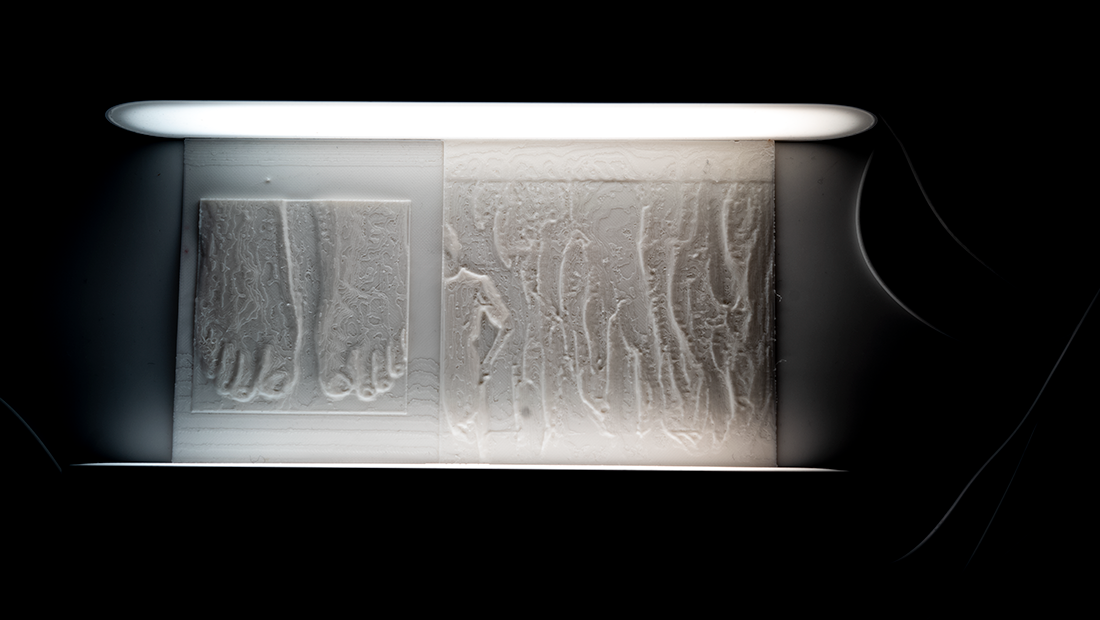REBE – A CASE FOR EXTENDED ONTOLOGY
An exhibition by Louise Crnkovic-Friis

In my practice, I explore what I call extended ontology as seen through the lens of artificial intelligence (AI) and neurodiversity.
Discussions around ontology have had a long biased trajectory towards a neurotypical world view. It is based on a common set of perceptions of what reality is, based on the neurotypical human brain. For my practice I have been interested in taking a broader view – to see where we get when we extend the concept of intelligence beyond the neurotypical or even human. What new do we discover? What new ethical challenges do we find as we venture into uncharted territory?
Connecting artificial intelligence and neurodiversity may seem like an unusual combination – the former seen as a technological tool and the latter seen as an ethical issue of rights and inclusion. Their common touching point is however the essence of both – an intelligence that is divergent from the neurotypical human. That opens up many venues of investigation ranging from the ethical to the craft practical. Most schools of philosophy regardless if they are positivist or post-modernist all agree that our way of understanding “what is” is highly affected by the capabilities of our senses and our intelligence (neurotypical implied).
Extending that intelligence beyond the neurotypical automatically leads to an extended ontology and an interesting area to explore as it relates to artistic theory and practice.
My practice dwells in a world of different types of artificial intelligence – my multimodal collaborative partners.
The multimodal nature of the works is an important thread as it in itself extends the traditional categorization and perception of artworks – for example, seeing a choreography expressed as a static sculpture unsettles the assumption that a choreography is only found in a moving body. Common in the human neurodiverse spectrum is synesthesia and adapting a work of art into a different modality is a quick way of shifting one’s gaze. The multimodal also challenges the neurotypical bias towards language and language centric epistemology.
The works presented centre around re-being with a material, with a space, with a movement and with a different intelligence.
http://crnkovic-friis.com/about/
When?
- 22 May 11.00-15.00
- 24 May 10.00-14.00
- 25 May 10.00-14.00
- 26 May 10.00-14.00
- 27 May 10.00-14.00
Where?
Thank you
Thank you to my supervisor Eleanor Bauer, my collaborators AI artist and writer Susan Smith, and artist and dear friend Merete Smedegaard.Further thanks to my colleagues in NPP2021, Chrysa Parkinson, Tove Salmgren, Frank Bock, Karin Hauptmann, Jenny Larsson, Anna Grip and everyone who has been involved in the program and who shared so generously. Finally a special thank you to Ada, August and Luka Crnkovic-Friis.